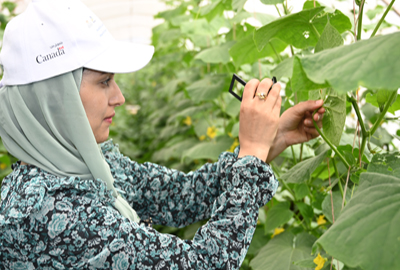The Project will comprise five components, namely:
- food security and livelihood needs assessments and selection of project beneficiaries (with the full involvement of women’s focus groups);
- sustainably improve horticultural productivity through the promotion of environmentally sound and nature-based climate-smart agriculture (CSA), post-harvest management (PHM) and good agricultural practices (GAP);
- empowerment of landless and unemployed rural women to generate household income through the establishment of micro agri-food enterprises;
- development of individual or group-based small agri-food enterprises to process, among others, surplus horticultural production and to create jobs for unemployed women; and
- awareness raising about nutritious foods and healthy diets. A gender-transformative approach will be adopted in the implementation of all five components, to try and challenge the most evident gender-based inequalities faced by rural women and stimulate a process of change with regards to discriminatory gender roles and stereotypes.
CSA is an approach that helps to guide actions to transform and re-orientate farming systems to effectively support development and ensure food security and poverty reduction in a changing climate. CSA aims to tackle three main objectives, namely:
(i) to sustainably increase agricultural productivity and incomes;
(ii) to adapt and build resilience to climate change; and
(iii) to reduce and/or remove greenhouse gas emissions, where possible.
CSA technologies and practices relevant to open field and greenhouse fruit and vegetable production in Miya Governorate include: drought and heat-tolerant crop varieties; integrated pest management (IPM); integrated plant-soil nutrient management (IPSNM) that includes the making and application of compost from food waste and organic farm waste; on-farm water management (OFWM); soil conservation; and water harvesting. In particular, OFWM practices and technologies promoted by the Project will increase the efficiency of irrigation water supplies to ensure that any increase in water demand will not cause water shortages within rural communities. Linked to CSA, is the promotion of innovative and improved PHM technologies and practices, which include environmentally sound and energy efficient handling, cleaning, grading, processing, packaging and labelling, storage, transportation and marketing of fresh horticultural produce (e.g. fruits, vegetables, herbs, spices and medicinal plants) or processed agri-food commodities.
The Project will also make significant contributions to:
- Sustainable Development Goals (SDGs) 1, 2, 5, 8 and 12, i.e. ‘End poverty in all its forms everywhere’, ‘End hunger, achieve food security and improved nutrition and promote sustainable agriculture’, ‘Achieve gender equality and empower all women and girls’ and ‘Promote sustained, inclusive and sustainable economic growth, full and productive employment and decent work for all’ respectively.
- The Government of Egypt’s ‘FORSA’ and ‘1,000 Poorest Villages Programmes’.
- The GAC’s development envelope for Egypt which is helping to support, among others: (a) the growth of micro, small and medium-sized enterprises, expand entrepreneurship and boost the productivity of the private sector; and (b) strengthening of the quality and range of market-responsive vocational, technical and professional training programmes available to marginalised populations including young men and women.
- Outcomes 1 and 2 FAO’s Egypt Country Programming Framework (2018-2022), i.e. ‘Increased smallholder agricultural productivity’ and ‘Increased degree of food security on strategic goods’ respectively – in particular Output 2.6.4, aiming at implementing ‘One programme on women socio-economic empowerment and employment through sustainable agriculture and access to finance and markets designed’.
Target Groups:
- 2,000 rural women (mainly, smallholder farmers, landless and unemployed women) actually or potentially engaged in horticulture and agro-food processing and their households from ten of the poorest villages in Minya Governorate.
- Relevant agri-food value chain actors.
The expected outcome of the Project will be achieved through generation of the following five inter-related outputs:
- Food security and livelihood needs assessments conducted and 1,400 project beneficiaries selected for participation in FFSs and FBSs (with the full involvement of local women’s focus groups).
- 800 smallholder women horticultural farmers adopt innovative and improved Climate Smart Agriculture CSA/nature-based and PHM technologies and practices and GAP principles to increase food production and horticultural productivity (including reduced pre and post-harvest losses) through the mobilization and implementation of and financial assistance to women-focused FFSs.
- 600 landless and unemployed rural women adopt income generating initiatives by developing homestead-based micro agri-food processing enterprises to promote value addition, basic agri-business development and create self-employment through the mobilization and implementation of and financial assistance to women-focused FBSs.
- 40 individual and group-based small agri-food processing enterprises established (by entrepreneurial rural women) to generate income for their owners and create additional jobs for unemployed women.
- Greater nutrition awareness by 2,000 households in the ten targeted villages (including those of the women targeted through the FFSs and FBSs and support to micro and small-enterprise development).
- Building the Capacity of NGOs and Small Farmers Informal Groups for the Technical, Financial and Administrative Implementation of Small-Scale Business Projects Sustainably
Related News




